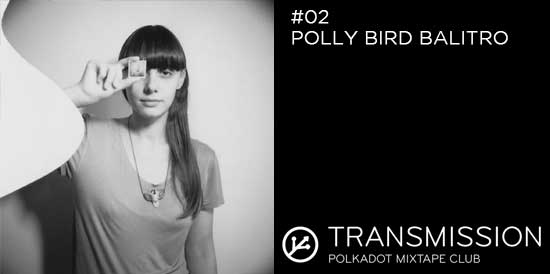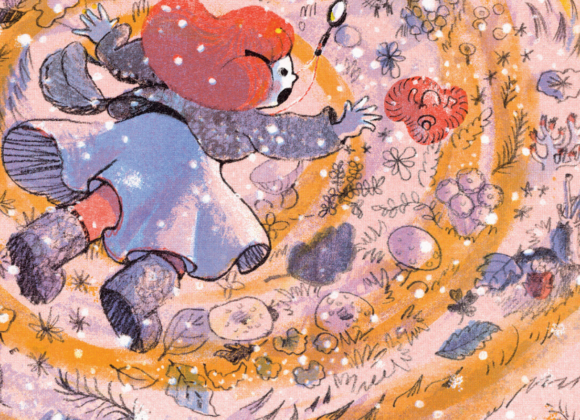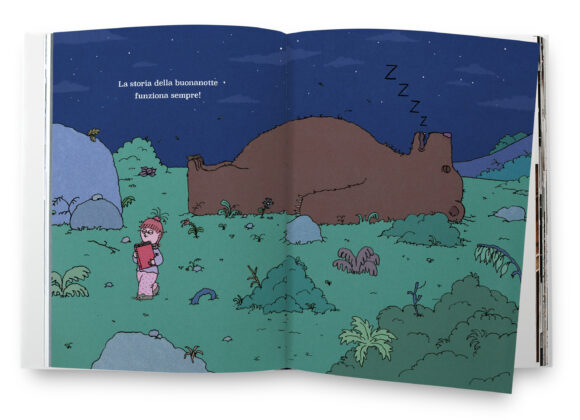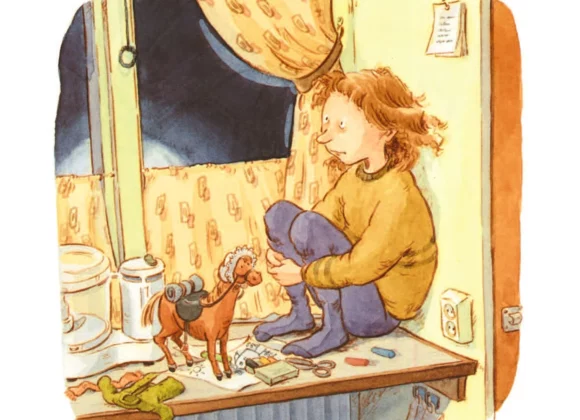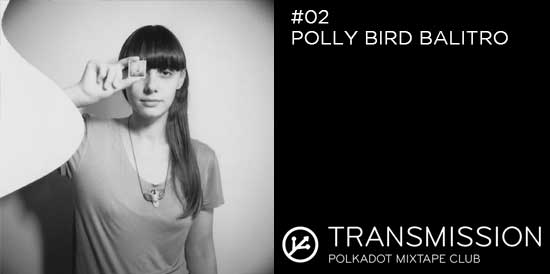
Born in a small village in the Alps called “Piussogno”, whose name, although it doesn’t appear in most of the maps, already says it all about her, I’m introducing you to Polly Bird Balitro, a young and talented photographer who, after having studied Photography at IED in Milan, in 2010 moved to Helsinki to follow the exclusive and innovative Master in Environmental Art. It’s here that she still lives, as she tells, in a small loft in an ancient building which she could have never afforded in Milan. “From her window-she’s proud to add- she can even see the sea”.
Nata nel piccolo paesino alpino di “Piussogno”, il cui nome di per sé, pur non comparendo nella maggior parte delle cartine geografiche, già la dice lunga di lei, vi presento Polly Bird Balitro, giovane fotografa di talento che, dopo aver studiato Fotografia allo IED di Milano, nel 2010 si trasferisce a Helsinki per seguire l’esclusivo ed innovativo Master in Environmental Art. E’ qui che tuttora vive, come mi racconta, in un appartamentino di una stanza in un palazzo d’epoca che non avrebbe mai potuto permettersi a Milano. “Dalla sua finestra – ci tiene a precisare – si vede persino il mare”.

1. First of all I’m curious to find out what is behind the definition “Environmental artist and photographer” that is on your website.
I don’t like to use the word “definition”: it is an easy way to forget about something important to say, not to write too much about it. I believe that the “environmental artist and photographer” is not only an artist who is sensitive towards environmental issues, but also an artist who is inspired by the environment itself – in my case especially by the natural environment – and interacts with it creating his/her own works.
1. Innanzitutto sono curiosa di scoprire cosa c’è dietro la definizione “environmental artist and photographer” che appare sul tuo sito web.
Non mi piace usare il termine “definizione”: si rischia sempre di omettere qualcosa di importante, per non dilungarsi troppo. L’ “environmental artist and photographer” è l’artista che non solo è sensibile ai problemi ambientali, ma si lascia anche ispirare dall’ambiente che lo circonda – nel mio caso soprattutto da un ambiente naturale – e che interagisce con questo quando crea le sue opere.

2. In your series “Selflandscapes” presented recently at ArtVerona 2011, the main theme is the continuous research of a mental and physical contact with Nature, in order to reach a complete fusion with it. Where does this “almost D’Annunzian” panic feeling come from?
I have never thought about “panismo d’annunziano” to talk about SELFLANDSCAPES, nor any of my other works. The continuous research of a contact with Nature is absolutely spontaneous to me: whenever I try to detach myself from it, I will end up going back to the
start again. Most of my works would not exists, if I wouldn’t have the possibility to lose myself in the environment which is giving me all the inspiration I need – this kind of environment is most of the time the natural environment. I don’t know why this happens, but the relationship with Nature to me is fundamental.
2. Nella serie SELFLANDSCAPES presentata recentemente all’ArtVerona 2011, il tema principale è la continua ricerca di un contatto mentale e fisico con la Natura, fino a giungere ad una fusione totale con essa. Da dove nasce questo “quasi d’annunziano”
sentimento panico?
Non ho mai pensato al panismo “d’annunziano” nel raccontare di SELFLANDSCAPES. La ricerca di un contatto con la Natura è del tutto spontanea da parte mia: qualora cerco di allontanarmene, mi rendo conto di tornare sempre al punto di partenza. La maggior parte dei miei lavori non esisterebbe, se non avessi la possibilità di immergermi in un ambiente che mi trasmette tutte le inspirazioni che sto cercando – un ambiente che è quasi sempre quello naturale. Non so spiegare come mai questo accada, ma il contatto con la Natura è sicuramente fondamentale per me.

3. The analogic relationship between music and photography has often been discussed: what kind of connection is there between your shots and the tracklist you suggested us?
I haven’t yet met an artist who is not inspired by music. Music is almost as important as my relationship with Nature to me. Every single track I have chosen for my playlist is connected to a particular moment, to a specific place and to a person who have inspired me and shaped me over the years. It is a bunch of songs, which are quite different from each others, but all of them extremely significant to my artistic research. Every track is related to various memories: the theme of Past and memories is very important in my works.
3. Si è spesso discusso del rapporto analogico che lega musica e fotografia: che relazione c’è tra i tuoi scatti e la tracklist che ci hai suggerito?
Non ho ancora incontrato un artista che non venga inspirato dalla musica. La musica è fondamentale quasi quanto il contatto con la Natura per me. Ogni traccia che ho scelto per la mia playlist è legata a un momento particolare, a un posto preciso e a una figura che mi hanno ispirato e formato negli anni. Si tratta di un insieme di brani, alcuni molto diversi tra loro, ma tutti ugualmente significativi per la mia ricerca artistica. Ogni canzone è legata a un insieme di ricordi: il tema del passato e del ricordo sono molto presenti nei miei lavori.
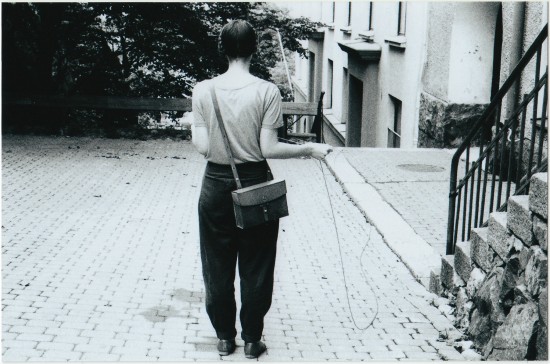
4. In the series “Postcards 02” your passion for the animal world comes out (about this, why is the incipit of your blog dedicated to the encyclopedic description of birds?). What is more interesting for me about this work is the naturalness in which illustration and photography are harmoniously melted one completing the other one. What attitude do you have towards drawing?
I don’t feel like I am particularly good at drawing, anyway I like it and I have always liked to draw. In my series of postcards dedicated to Finland I wanted to experiment with drawing, to add something more to some polaroids blow-ups I have taken during a trip to Lapland. My experiment seems to be appreciated by a good amount of people, which makes me even more happy that I have tried something new. Speaking about my passion for animals, I could say it goes about my passion for Nature. Since I was a child I have always adored animals: my family has taught me how to love them and respect them; my dear granny gave me through her genes all her love for the animals of her small farm. Among all animals, it is easy to tell I prefer birds: they are extremely gracious and especially they can fly. That is why my blog header is dedicated to birds and why I liked to be called “Bird” as a second name.
4. Nella serie “Postcards 02” emerge la tua passione per il mondo animale (a proposito, ci sveli la ragione per cui l’incipit del tuo blog è dedicato alla descrizione enciclopedica degli uccelli?). Ciò che mi ha colpito maggiormente di questo lavoro è la naturalezza con cui illustrazione e fotografia si fondono armoniosamente una a compimento dell’altra. Che atteggiamento hai verso il disegno?
Non mi considero particolarmente brava nel disegno, in ogni caso, però, mi piace e mi è sempre piaciuto disegnare. Nella mia serie di cartoline dedicata alla Finlandia ho voluto sperimentare col disegno, aggiungendo qualcosa in più a degli ingrandimenti di polaroid scattate in un viaggio verso la Lapponia. L’esperimento sembra essere stato apprezzato da molti, il che mi rende ancora più felice di aver provato qualcosa che mi era nuovo.
Per quanto riguarda la passione che ho per gli animali, si può dire che vada di pari passo con quella che ho per la natura. Fin da bambina ho adorato gli animali: la mia famiglia mi ha insegnato ad amarli e rispettarli; la mia cara nonna mi ha trasmesso geneticamente, se possibile, tutto l’amore verso gli animali della sua piccola fattoria. Ho una preferenza per gli uccelli che è facile da intuire: sono degli animali estremamente graziosi e soprattutto possono volare. Ecco il perchè dell’incipit dedicato agli uccelli sul mio blog ed il perchè mi piace farmi chiamare “Bird” di secondo nome.

5. What kind of photography equipment and which lenses do you use normally?
Since I have started to photograph, I have been collecting through the years many many cameras with various lenses. I couldn’t possibly talk about all of them – some of them I have left somewhere in my previous houses. I am happy though to mention my favourites: first of all my Nikon FM, my true traveling companion and my oldest friend; for medium format film my Mamiya RB 67, a third-hand camera still working perfectly, both with film and polaroid back; little Agfa Clack, still for 120mm; the Polaroid Super Colour Swinger III for polaroids 669 and Fuji fp-100s; the Polaroid Land Camera 1000, my first polaroid for 600s; and, the latest I have got, my Vermeer Pinhole camera for big format film. I work only with analogue photography and I adore black and white printing: I consider myself very lucky to have my own darkroom to be able to develop and print my works.
5. Che attrezzatura fotografica e quali ottiche usi abitualmente?
Da quando ho cominciato a fotografare, ho collezionato negli anni tantissime macchine fotografiche con ottiche diverse. Non potrei menzionarle tutte – parte di queste sono rimaste da qualche parte nelle mie case precedenti. Ci tengo però a elencare qui le mie preferite: in primo luogo la mia Nikon FM, inseparabile compagna di viaggio e la mia più vecchia amica; per il medio formato la mia Mamiya RB 67, di terza mano ma sempre impeccabile, con dorso pellicola e dorso polaroid; la piccola Agfa Clack, sempre per il 120mm; la Polaroid Super Colour Swinger III per le polaroid 669 e le Fuji fp-100; la Polaroid Land Camera 1000, la mia prima polaroid per le 600; e, ultima arrivata, la mia Vermeer Pinhole per il grande formato. Lavoro soltanto con la fotografia analogica e adoro la stampa in bianco e nero: mi considero molto fortunata ad avere una camera oscura tutta per me dove sviluppare e stampare.

6. I’d like to play a little game with you: choose a shot that you think is particularly significant of your photographical research and tell me everything about it, from how it is born to why you chose it.
I have taken this photograph a few years ago: back then I was spending my holidays in Sweden. It was during that summer that I have admitted to myself that the path I wanted to follow had nothing to do with fashion photography nor advertising. There I have decided to dedicate myself to a type of photography connected to feelings and emotions, that could tell more about me. The image I have chosen was on a 120mm Fuji Provia film roll that I shot with my Agfa Clack, double exposed. I wanted to tell about two people who were in love and a part. From this photography on I had never taken in consideration any images other than those which were related to feelings.
6. Mi piacerebbe provare un piccolo gioco: scegli una foto che ritieni particolarmente significativa della tua ricerca fotografica e raccontami tutto ciò che puoi al riguardo, da come è nata al perchè l’hai scelta.
Ho scattato questa fotografia qualche anno fa ormai: mi trovavo in Svezia per un viaggio. E’ stato durante quell’estate che ho ammesso a me stessa che la strada che avrei voluto prendere davvero non era legata né alla fotografia di moda né alla fotografia pubblicitaria. Lì ho deciso di dedicarmi a un tipo di fotografia legata alle sensazioni e agli stati d’animo, che potesse raccontare di me. L’immagine che ho scelto era su un rullino 120mm Fuji Provia che avevo scattato con la mia Agfa Clack, esposta due volte. Volevo raccontare di due persone lontane che si amavano. Da questa fotografia in poi non mi sono mai più occupata di immagini che non fossero legate ad un sentimento.

7. As my last question I want you to imagine the Photography of the future: what will be the progressive evolution of your artistic language?
I don’t like to imagine the future: I have always preferred to imagine the present. About the Photograph of the future, I would want it to be analogue again. Unfortunately I am doubting it will happen for real. My Photograph of the future will surely be fighting to stay analogue at any cost. At the moment my artistic expression is having a huge transition: I have chosen to try to work with different forms of art other than just photography, even though I do not intend to leave it behind ever. While I am continuously experimenting with old things and new things, I am giving myself the time to think about a not too far future.
7. Come ultima domanda ti chiedo di immaginare la Fotografia del futuro: in che cosa consisterà l’evoluzione progressiva del tuo linguaggio artistico?
Non mi piace immaginare il futuro: ho sempre preferito immaginare il presente. Per quanto riguarda la Fotografia del futuro, vorrei poter dire che sarà di nuovo analogica. Purtroppo ho dei seri dubbi in merito. La mia fotografia del futuro certamente lotterà per rimanere analogica ad ogni costo. In questo momento il mio linguaggio artistico sta vivendo una grossa transizione: ho scelto di provare ad occuparmi di altre forme artistiche oltre alla fotografia, senza tuttavia volerla abbandonare mai. Mentre continuo a sperimentare con cose vecchie e nuove, mi dò del tempo per pensare al futuro non troppo lontano.

TRANSMISSION_02 : POLLY BIRD BALITRO
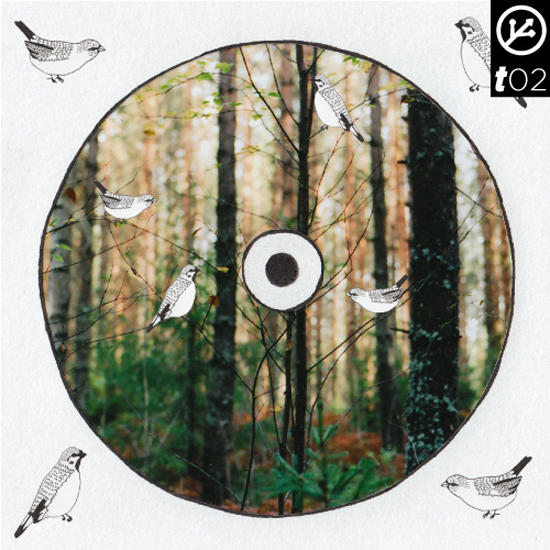
Sigur Ros – Glosoli
Neutral Milk Hotel – In The Aeroplane Over The Sea
Joanna Newsom – Peach, Plum, Pear
Camera Obscura – Suspended from Class
Belle & Sebastian – If You’re Feeling Sinister
Patrick Wolf – Pigeon Song
Emiliana Torrini – Heartstopper
Seabear – Owl Waltz
Ane Brun – Changing of the Seasons
Jonsi – Animal Arithmetic
Paula & Karol – House into a home
Paavoharju – Italialaisella Laivalla
Eleanoora Rosenholm – Maailmanloppu
Joose Keskitalo ja Kolmas Maailmanpalo – On Hyvä Että Olet Surullinen
Nick Drake – Bird Flew By


